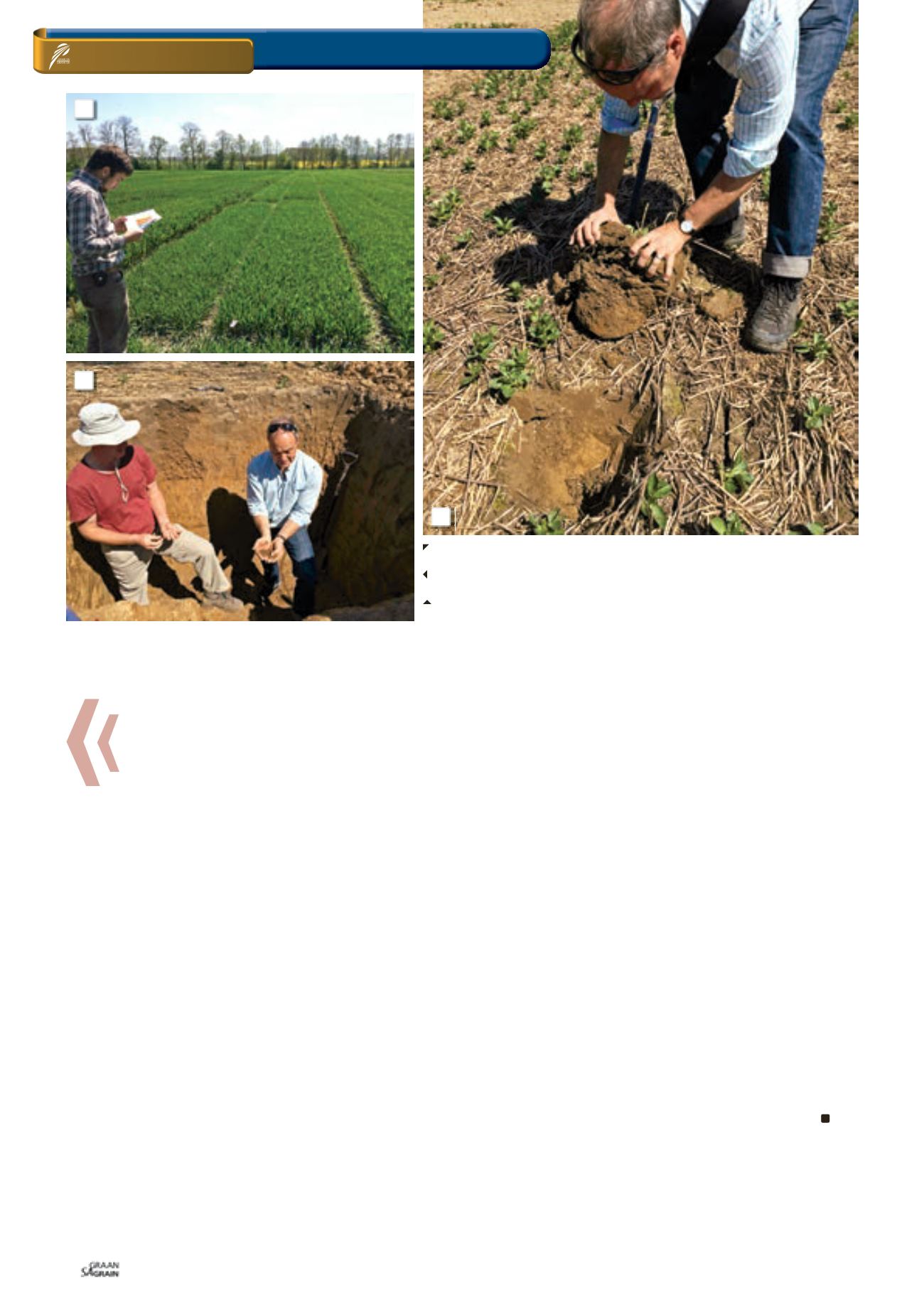

Augustus 2016
86
The abundant potential of Germany’s
loess-belt
In Germany, I was invited and hosted by Professor Thomas Weyer,
soil science lecturer at the Soest University of Applied Sciences.
I gave two lectures to graduate students and one to other lectur-
ers involved in the agricultural department. I also presented a pa-
per at a conference with the theme: ‘Sustainable development in
South Africa? What kind of impulses sets the partnership with
North Rhine-Westfalia?’ The conference took place from 9 to 10 May
in the Evangelian Academy of Villigst in the City of Schwerte.
The Soest University runs their experimental farm completely
under CA practices, an achievement which they are very proud
of (see
Photo 4
). Although the loess soils covering large parts of
Germany have abundant potential supporting dryland wheat yields
of between 10 t/ha and 12 t/ha, conventional tillage practices are
still the dominant system used by German grain producers, due to
the reasons mentioned above.
Loess is composed predominantly of silt-size particles, which is
formed essentially by the accumulation of wind-blown dust; typi-
cally loess soils have a silt content of between 80% and 90% and
a clay content of around 10% (see
Photo 5
). Loess soils are highly
fertile, but they slake easily when the soil surface is exposed to rain
and are therefore prone to water erosion.
The research conducted at Soest under the leadership of Prof
Weyer, has shown that CA has a significant positive effect on the
health of loess soils and further increase the productivity and sus-
tainability of grain production systems in those areas (see
Photo 6
).
At the conference in Schwerte, the message to all the groups and
individuals who are keen to invest their resources and expertise in
South Africa, was to embrace the approaches and technologies of
sustainable agriculture (such as CA), when working with producers
and other key stakeholders in the agricultural sector of South Africa.
Message from Europe
Although the adoption rate of CA in Europe is currently very low,
there are positive signs appearing on the horizon that could soon
turn the situation around. Once a strong philosophy and real actions
are firmly adopted by and entrenched in various levels of the Euro-
pean agricultural sector, it could reverse the situation fairly quickly.
On the positive side has always been the very favourable soils and
climate conditions and recently a positive change in policy and in-
stitutional support to the producers, which include carbon-friendly
subsidies and incentive schemes linked to CA principles, soil man-
agement protocols and/or environmental services, which will give
producers real incentives and rewards to change.
This, together with greater support from the corporate sector (in
terms of producing CA equipment and machinery) and the research
community, change for the better in Europe does look hopeful. The
most promising sign for CA advancement in Europe, however, is
the steady growth of active producer groups and networks, taking
the lead and giving guidance on all the key elements of CA. In that
respect, the lessons shared from the Grain SA’s CA producer-
centred innovation systems approach could be of great help.
References
Basch, G, Geraghty, J, Stret, B and Sturny, WG. 2008.
No-tillage in Europe – state
of the art: Constraints and perspective
. In: T Goddard, MA Zoebisch, YT Gan,
W Ellis, A Watson, S Sombatpanit (Eds). No-till farming systems (159 - 168). World
Association of Soil and Water Conservation, Special Publication No. 3: Bangkok.
Kassam, A. 2011.
The future of farming: What needs to change?
The Sixth Hugh
Bunting Memorial Lecture: University of Reading, 13 June 2011.
4: Wheat trials under CA at the experimental farm, Soest, Germany.
Photo: Dr Hendrik Smith
5: Dr Hendrik Smith and Prof Thomas Weyer investigating a Loess soil profile on
the Soest experimental farm.
Photo: Steffen Hünnies
6: Prof Thomas Weyer assessing the soil health under a CA treatment, Soest
experimental farm.
Photo: Dr Hendrik Smith
CA adoption in Europe very slow
4
5
6
ON FARM LEVEL
Conservation agriculture

















